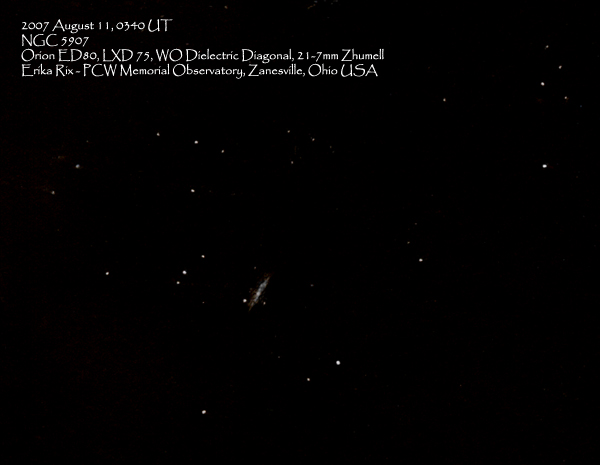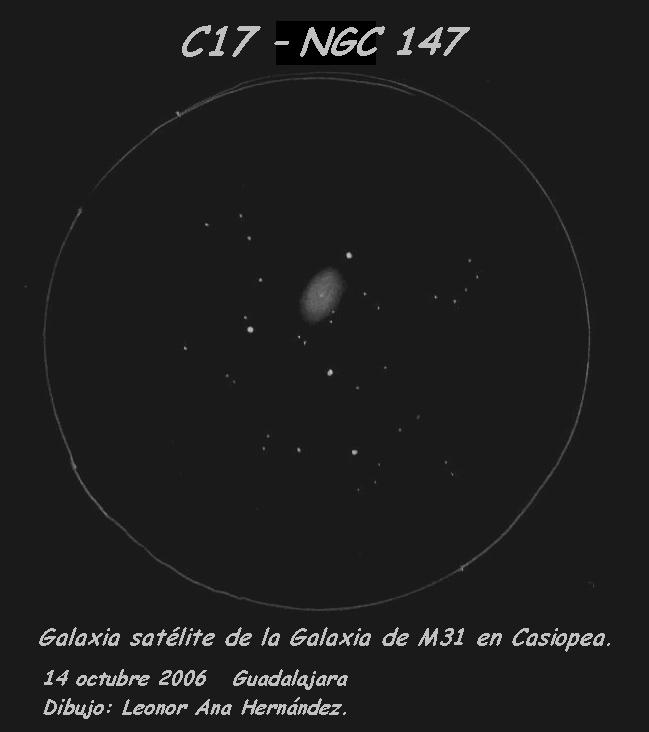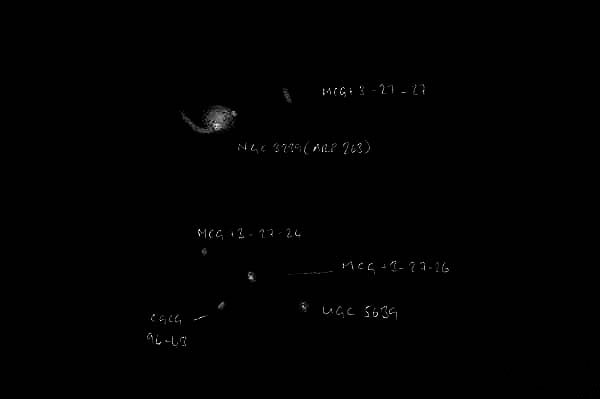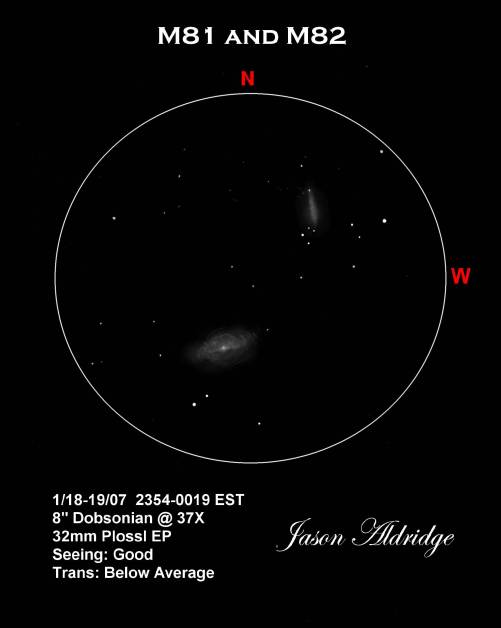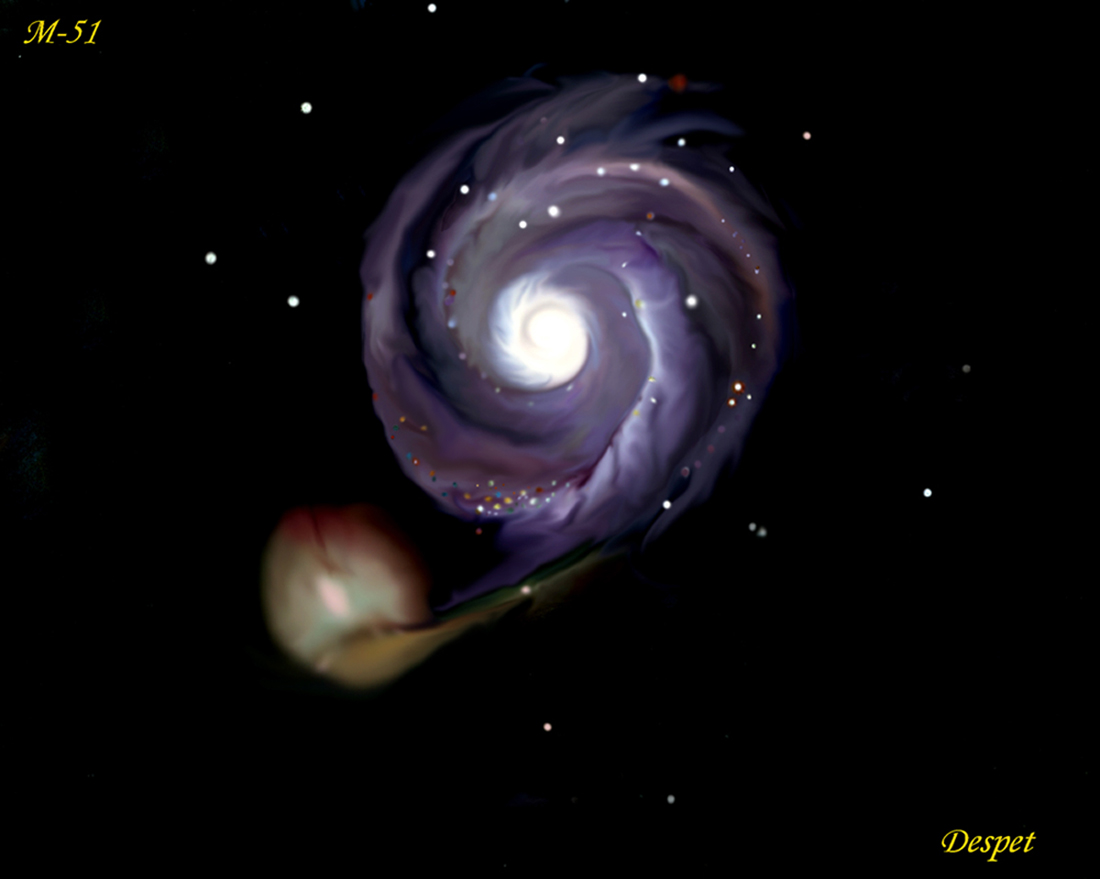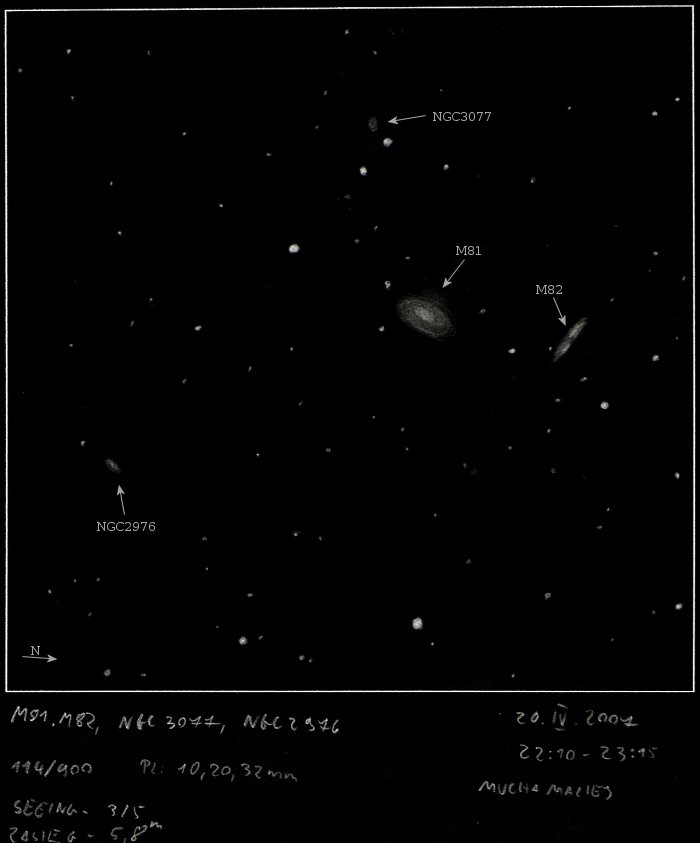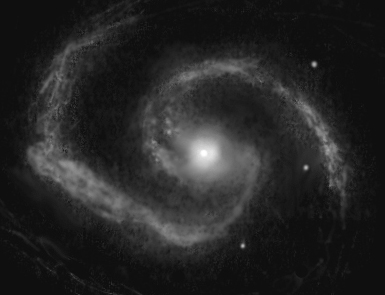
M51
May 29, 2006
Raw pencil sketch (HB lead), negative view lightly processed with
Photoshop Elements
Raw sketch was drawn at the eyepiece
28 inch f4 Newtonian at 710x
Seeing 8/10
Transparency 8/10
Limiting magnitude 6.4
Once upon a time, or last May 29th to be exact, I was lucky enough to
experience one of those amazing nights that we all hope for every time
the sky clears. The sky was dark, transparent and steady and the
temperature was surprisingly comfortable. In short, just about perfect.
But the best part was seeing something new and surprising in an object
I’ve looked at many, many times through all sizes of telescopes.
M51 was near the zenith and looked great at first glance, which wasn’t
unexpected since I was looking at it through a 28″ Newtonian after all –
it should look great! But it looked even better than normal because of
the excellent sky conditions which to me means piling on the
magnification. One of the features I enjoy trying to see within M51 is
the beginning of one of the main spiral arms coming out of the core.
They look like two faint prongs projecting out from the northern side of
the core and quickly blend into that spiral arm. These prongs are
visible in almost every M51 photo which inspired me to try to see them
visually in the first place. I’ve seen them well in a 16 inch scope and
suspect a 12 inch would be able to pull them in too.
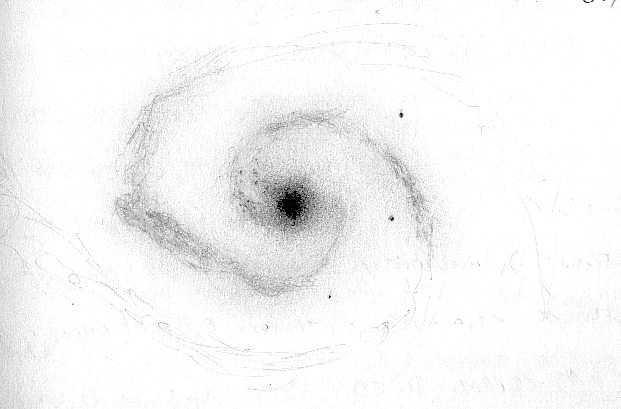
At 710x I started seeing small glimmerings of light shimmer in and out
of view within the prongs, like they were studded with tiny, barely seen
stars. But at 31 million light years distant M51 I must have been seeing
something else. Looking at the latest HST image of M51 these objects are
probably HII star forming regions and huge star clusters and probably a
Milky Way foreground star or two.
A brief aside on my sketch – I concentrated on the core area and the
star-like points that glimmered in and out of view and that the farther
from the core I got the less detail I put in the sketch. Also, the fine
textures around the core and prongs are probably an artifact originally
caused by the texture of my notebook paper. The original pencil sketch
was scanned and enlarged about 300%, and then lightly processed in
Photoshop.
Howard Banich
Portland, Oregon

